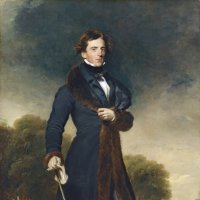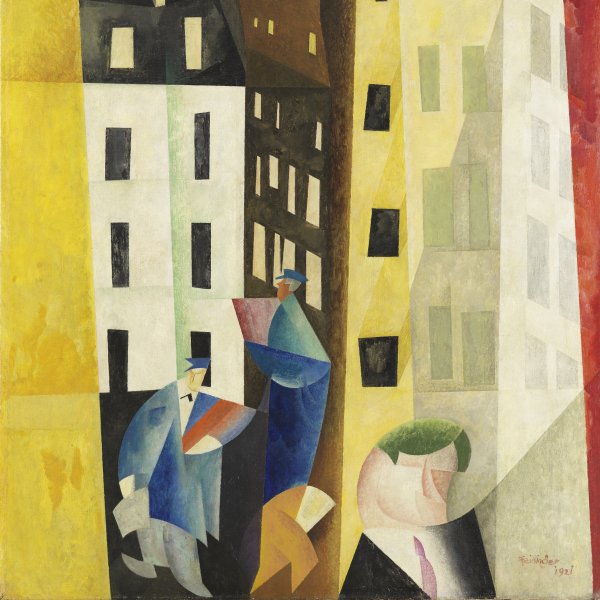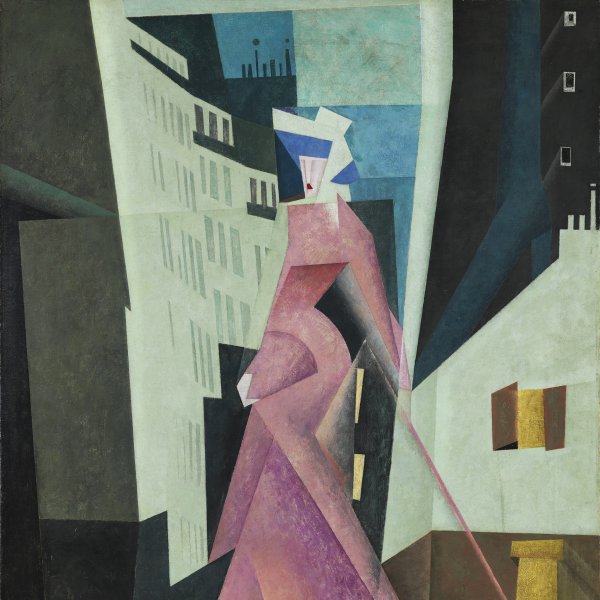Fashion Show
1921
Oil on canvas.
201.5 x 100 cm
Museo Nacional Thyssen-Bornemisza, Madrid
Inv. no.
490
(1986.7
)
ROOM 33
Level 1
Permanent Collection
Although Franz Heinrich Lovis Corinth, known as Lovis Corinth, is held to be one of the greatest exponents of German Impressionism, together with Max Liebermann and Max Slevog, his painting soon evolved towards a dramatic, exaggerated Expressionism, which links him to the modern currents of German Expressionism.
According to the testimony of his widow, Charlotte Berend, who was one of his first pupils and twenty years younger than him, Fashion Show was painted in 1921 in the couple’s apartment on the Klopstockstrasse in Berlin during January and February that year, as stated in the inscription on the painting. It shows a full-length figure of a woman executed in the characteristic impastoed and gestured style of his final years. The expressive vibration of his mature style has sometimes been accounted for by the partial paralysis he suffered from as the result of a stroke in 1911. However, as Carl Schulz-Hoffmann explained, it was due more to his manner of transforming the various influences received into a subversive type of painting with certain “official” properties.
The first owner of the work was Carl Steinbart, a collector of German Impressionism and mentor of younger artists like Nolde, Kokoschka and Pechstein. It was inherited by his daughter Dora Stach-Steinbart and after she died in 1970 it was sold by the Dutch firm E.J. van Wisselingh & Co. to Robert Stolper of London, whose daughter Laura Barry sold it to Baron Thyssen-Bornemisza through James Kirkman Ltd.
Paloma Alarcó
According to the testimony of his widow, Charlotte Berend, who was one of his first pupils and twenty years younger than him, Fashion Show was painted in 1921 in the couple’s apartment on the Klopstockstrasse in Berlin during January and February that year, as stated in the inscription on the painting. It shows a full-length figure of a woman executed in the characteristic impastoed and gestured style of his final years. The expressive vibration of his mature style has sometimes been accounted for by the partial paralysis he suffered from as the result of a stroke in 1911. However, as Carl Schulz-Hoffmann explained, it was due more to his manner of transforming the various influences received into a subversive type of painting with certain “official” properties.
The first owner of the work was Carl Steinbart, a collector of German Impressionism and mentor of younger artists like Nolde, Kokoschka and Pechstein. It was inherited by his daughter Dora Stach-Steinbart and after she died in 1970 it was sold by the Dutch firm E.J. van Wisselingh & Co. to Robert Stolper of London, whose daughter Laura Barry sold it to Baron Thyssen-Bornemisza through James Kirkman Ltd.
Paloma Alarcó










